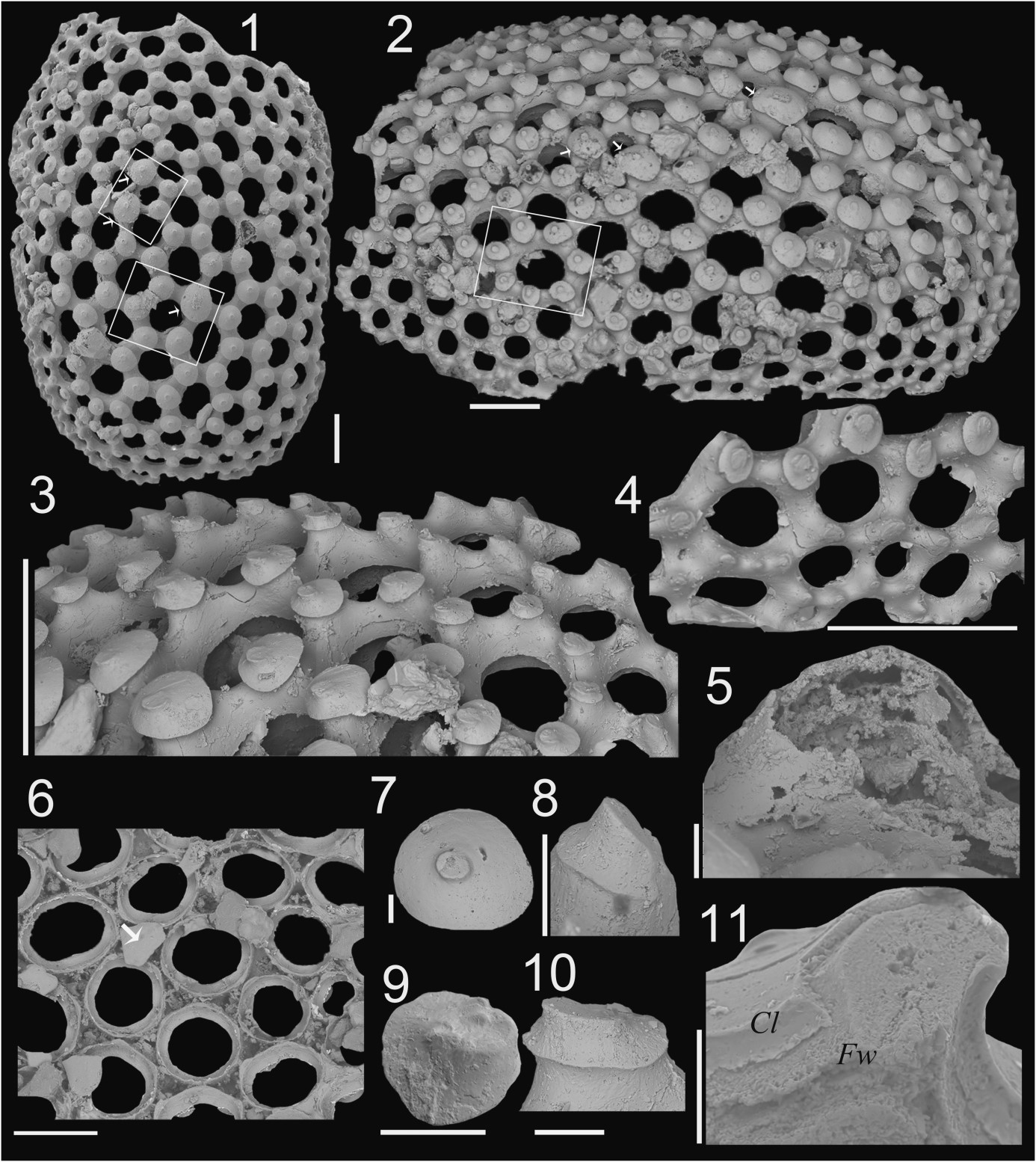
Fig. Microdictyon sp. from the Xinji Formation, Cambrian Stage 4
The isolated minute net-like phosphatic plates of Microdictyon are a quite common component among the small shelly fossils in the early Cambrian. The zoological affinity of these plates was unknown until Prof. CHEN Junyuan and his colleagues discovered the articulated soft-bodied specimens of Microdictyon from the Chengjiang Biota in 1989. Their discovery shows that these net-like plates were originally positioned on the two sides of an elongated caterpillar-like trunk possessing paired uniramous lobopod limbs, demonstrating an affinity of Lobopodia for these net-like plates. Although the isolated plates of Microdictyon have a near cosmopolitan distribution in the lower and middle Cambrian, they were previously not known from the North China Platform.
Recently, PAN Bing from Nanjing Institute of Geology and Palaeontology, Chinese Academy of Sciences and his international colleagues from Durham University and the Swedish Museum of Natural History reported the discovery of isolated plates of Microdictyon from the lower Cambrian Xinji Formation along the southern margin of the North China Platform when they worked on the small shelly fossils from the Xinji Formation (Cambrian lower Stage 4).
Based on analysis and comparison of the plate morphology of Microdictyon species established on isolated plates, the authors consider that studies dealing with taxonomy of isolated plates should comprehensively analyze whether the morphological variability observed in the assemblage could represent intraspecific or ontogenetic variation, and caution against establishing new species based on a small number of plates. The plates of Microdictyon from the Xinji Formation are similar to those of other species established on the basis of isolated plates but do bear some new features, such as mushroom-shaped nodes with a single inclined platform-like apex and an upper surface that displays radial lines. However, the plates reported from North China are left under open nomenclature due to inadequate knowledge of intraspecific and ontogenetic variation and low specimen numbers. They also summarize the stratigraphic occurrences and palaeogeographic distribution of Microdictyon in early and middle Cambrian. In addition, they argue against the use of Microdictyon as the index fossil of Cambrian Stage 3 and suggest that low mushroom-shaped nodes could be a primitive and conservative character of Microdictyon while tall mushroom-shaped nodes may be a derived character.
The discovery of the isolated plates of Microdictyon from North China not only extends the palaeogeographic distribution of Microdictyon but also provides very important material to study the evolution and biostratigraphic significance of Microdictyon in the early and middle Cambrian.
Reference: Pan, B., Topper, T.P., Skovsted, C.B., Miao L.Y., Li G.X., 2018, Occurrence of Microdictyon from the lower Cambrian Xinji Formation along the southern margin of the North China Platform. Journal of Paleontology, 92(1), 59-70.
(Information Source: NIGPAS)

